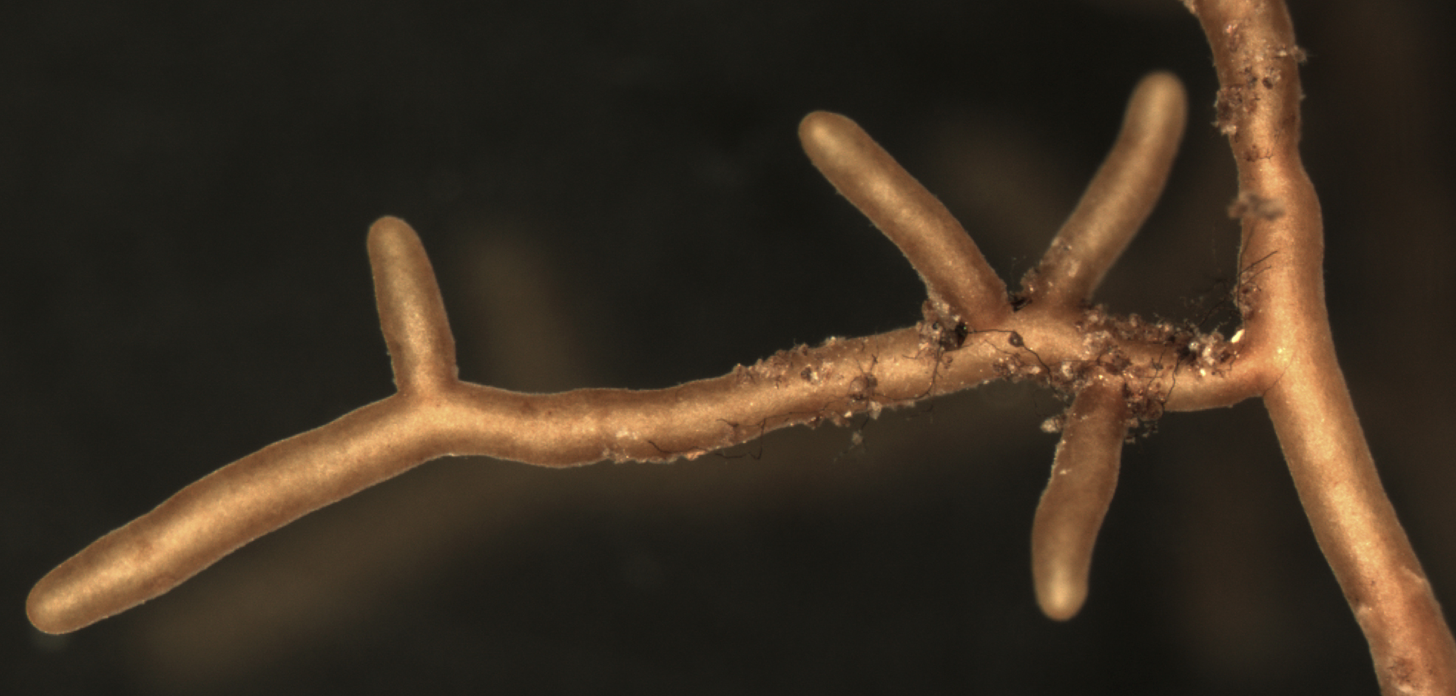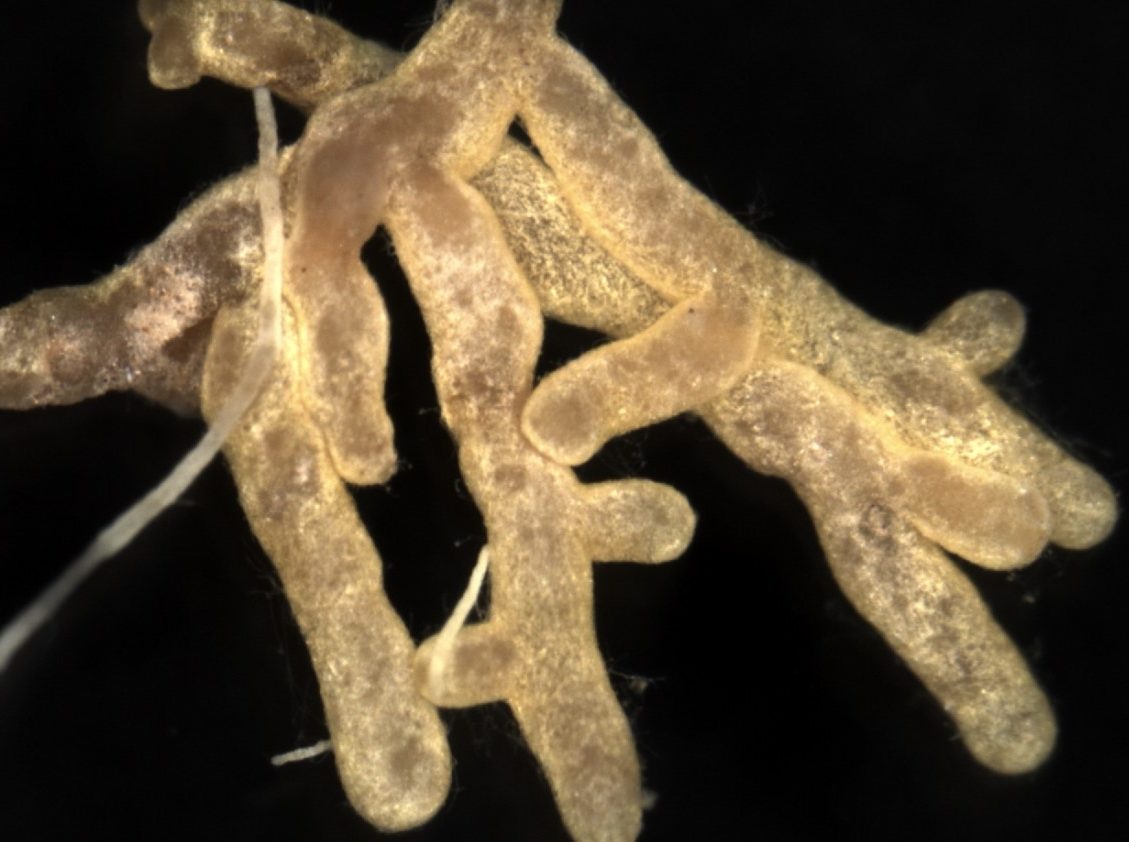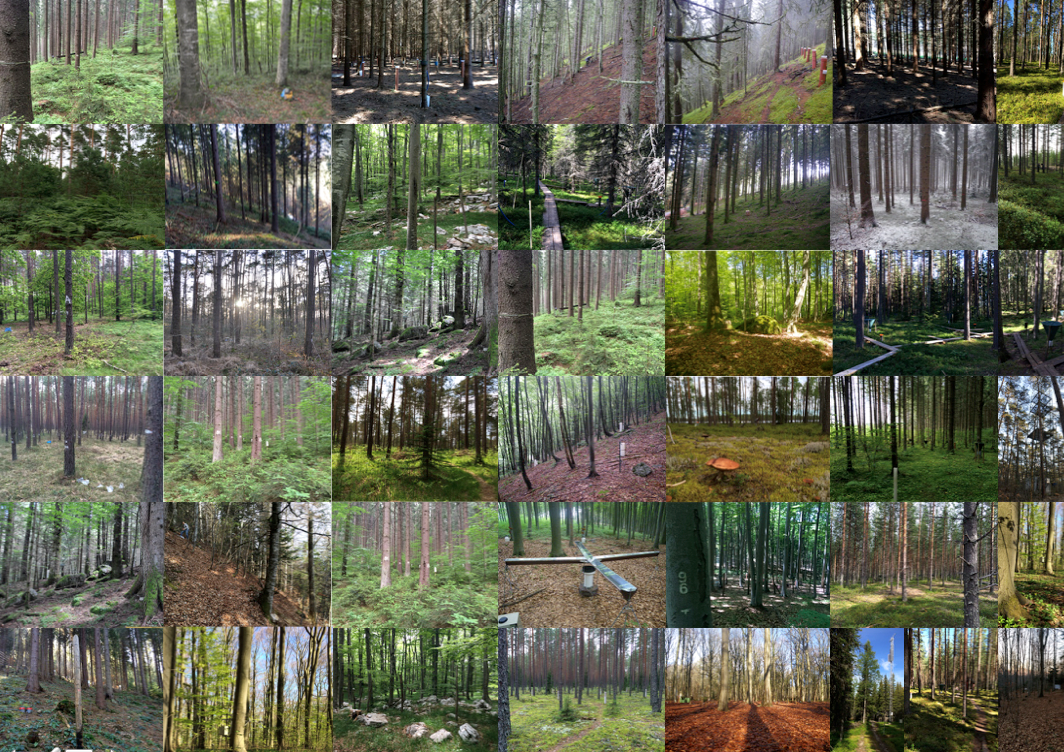Revisiting Mycorrhizas: Fungi & the Climate
Looking at the relationship between trees, fungi, and climate change, with a throwback to Dr Martin I. Bidartondo's fascinating blog from 2018.
Below you will find the fascinating blog “Mycorrhizas: What is happening below forest floors?” In 2018 Dr Martin I. Bidartondo delved into the science of the relationship between fungi, trees, and nitrogen pollution.
With COP27 this week we continue discuss how best to minimise the harm, and heal the negative impact, humans have already had on the environment; fungi has never been more relevant.
To start you off, here are some simple facts you should know:
- Fungi are largely invisible ecosystem engineers, stretching out beneath the surface. 25% of the Earth’s species live underground, making these ecosystems the store of 75% of all carbon. The evolution of plant-fungi partnerships coincided with a 90% reduction in atmospheric carbon dioxide. That partnership is vital for our current habitat, because fungi supports forests with the nutrition they require to soak up carbon.
- Some forests are better at absorbing carbon than others. Understanding which mycorrhizal fungi are present helps us understand which absorb CO2 most efficiently. Ectomycorrhizal fungi is a great example of this.
- Burning fossil fuels not only emits CO2. It also creates nitrous oxide gas, which rains down as nitrogen pollution, which in turn (as explained below) kills off the fungi carbon-captors. Nitrogen pollution can also be caused by agricultural run-off of fertilizer which tends to see fungi that do more for carbon capture losing out.
- Ectomycorrhizal fungi can slow down decomposition. Decomposition returns carbon from forest soils to the atmosphere, whereas more ectomycorrhizal fungi can help keep carbon locked up in trees and soils. Researchers found it contained as much as 70% more carbon than other fungi.
- Ectomycorrhizas only form on 2% of plant species. For example: birch, beech, willow, pine, and rose. The health of trees is also massively connected to the disruption of mycorrhizal relationships, a keystone in biodiversity. These networks make plants less susceptible to drought and more resistant to pests and heavy metals. Some fungi have even been linked to faster tree growth!
- Harming ectomycorrhizas and fungi sabotages our efforts to limit global warming. By transitioning away from fossil fuels toward renewable energy sources we can restore the ectomycorrhizal fungi and slow climate change.
- We can aim to create more resilient and carbon-storing forests for the future, by understanding the fungi networks better, and working with the right fungi in the right forests (like right tree right place).
Fascinating, right?! Keep reading for more from in depth academia…

Mycorrhizas: What is Happening on the Forest Floor?
By Dr Martin I. Bidartondo
Most plants do not have roots, they have fungus-roots, also known as mycorrhizas. Above the ground, plants have mastered the art of making carbohydrates through photosynthesis, but below the ground plants have contracted out the difficult job of mining for scarce soil minerals like nitrogen to fungi. Soil minerals are essential for making all components of plants and fungi. Fungal filaments are finer and longer than roots, so fungi can explore soil more thoroughly, can grow in and out of roots linking them to the soil, and are able to produce a wider range of enzymes for breaking down complex soil structures. You could think of these fungi as a soil toolkit for plants. This is not altruism, these fungi need carbohydrates from plants to be able to make their own component parts and to fuel their soil mining. Thus, intimate and ancient fungus-root partnerships evolved complementing the nutritional needs of most plants and some fungi. In fact, we are now learning that this partnership has long controlled the carbon and nitrogen cycles on land. However, since the Industrial Revolution, humans have been increasingly interfering with carbon and nitrogen cycling. Recently, alarming nutritional imbalances have been reported across Europe’s forest trees. What is happening with fungus-roots in our forests? It has taken ten years of research, but we now have some clues.
In Europe’s forests, nearly every root of every tree is covered by a fungus, forming a sheathing fungus-root, or ectomycorrhiza. We know some of these forest fungi species from the mushrooms, truffles or crusts that they form occasionally when conditions are suitable for them to reproduce. Below ground, in the form of filaments in the soil and fungus-roots, many of these fungi are large and long-lived; some individuals can occupy several square metres of forest ground and live for decades. Different fungi have very different soil mining abilities. For instance, some excel at mining for complex forms of soil nitrogen, while others can only access simple forms. Some can mine far from their root using cord-like structures, and others only next to it. Symbiosis with fungi evolved with the first land plants 500 million years ago. Humans have been altering the environments in which plants and fungi work across the whole world. We release carbon and simple nitrogen from the Earth’s crust by burning fossil fuels, and also release simple nitrogen from the atmosphere by making fertilizers industrially. The levels for carbon dioxide before the Industrial Revolution were about 300 ppm, and nearly zero for atmospheric nitrogen deposition. The currently increasing levels reach 390 ppm for carbon across the globe, and depending on the location, from 0 to 50 kg of nitrogen per hectare per year. All this extra carbon and nitrogen is entering ecosystems. This is an unprecedented experiment on a global scale. How are our forests and their fungus-roots coping? How is their carbohydrate for minerals trading affected?

Above: Fungus-roots, or ectomycorrhizas, of oak (Quercus petraea) with the yellow cracking bolete (Xerocomellus subtomentosus), characteristic of intermediate levels of atmospheric nitrogen deposition. The fungus grows between the outer root cells and over the whole surface of the root weaving a thick sheath of filaments that becomes the interface between root and soil. Carbohydrates, minerals and water move through fungal filaments between plant and soil. The fungus increases the thickness and branching of the roots, and forms white cord-like structures that reach far from the root into the soil to mine distant nutrient patches and colonise new roots. Photo by L. M. Suz.
Ten years ago, members of the oldest, largest and most intensive forest monitoring network, ICPForests (www.icp-forests.net), like Nadia Barsoum, Pasi Rautio and Walter Seidling, became interested in how the partnership between trees and fungi was reacting to environmental change, and whether fungi could warn land managers of changes happening below ground before changes were detected above ground. Around the same time, ecologists like Erik Lilleskov and Jeri Parrent were calling for unbiased, large-scale, DNA-based, data on distributions of fungus-roots, warning that not building up global data sets of baseline diversity and distribution information for mycorrhizal fungi would be a lost opportunity in the face of rapid global change. A workshop led to a Natural Environment Research Council PhD student at Kew Gardens, Imperial College and Forest Research, Filipa Cox, publishing the first large-scale analysis of Scots pine forests and their mycorrhizal fungi.
It is much more convenient to do research in the above ground light and air than in the dark and complex below ground, thus we know vastly more about pollinators, herbivores and shoot diseases than about soil life. The project was initially set up to study only three forest monitoring plots in Britain, but Filipa managed to extend it to nine more in Germany. This was a big effort – more than 1,120 soil cores and 4,768 roots were analysed individually using microscopy and DNA techniques. She found that nitrogen pollution was negatively affecting the diversity of fungi that trees could rely on; a few fungi appeared to thrive in disturbed conditions but most lost out. In other words, the soil toolkit for trees becomes limited in polluted areas. This finding led to a Marie Curie post-doctoral fellowship at Imperial College and Kew Gardens by Laura M. Suz. She is an expert on oak mycorrhizas, and managed to sample 22 oak monitoring plots across nine European countries – this time with 2,112 soil cores and 6,336 roots. Laura published her major study showing that nitrogen pollution is also negatively affecting oak forests and at an even larger geographic scale. The fungi that lose out are those that can mine at the longest distances from roots and mine for organic nitrogen. The short-distance inorganic nitrogen miners are winning.
Then, from 2013 to 2016, thanks to the Natural Environment Research Council, Sietse van der Linde and Bonnie Atkinson, a post-doctoral research associate and a research assistant at Imperial College and Kew Gardens carried out the most thorough study of forest fungus-roots yet undertaken. Part of this huge effort was published in 2018 by the top scientific journal, Nature. In total, 39,621 ectomycorrhizas of Scots pine, Norway spruce, beech and oak from 13,152 soil cores in 137 sites across 20 countries have been analysed since Filipa’s pioneer study. Environmental data on 38 soil, tree host, atmospheric deposition and climate variables were obtained from the ICP Forests database. Sensitive fungi with regard to N deposition include the darkening brittlegill (Russula vinosa) and the gypsy mushroom (Cortinarius caperatus). Most of the sensitive fungi are conifer-associates and specialize on organic nitrogen uptake from long distances. Further analysis revealed a much lower level than previously assumed at which nitrogen pollution affects fungus-roots, ca. 6 kg per hectare per year. Below that critical load, simple nitrogen acts as a fertilizer. Above that, sensitive species respond with sharp declines or may disappear, being replaced by less effective nutritional partners. Nearly all of Britain exceeds that level.
What is next? Having finally linked environmental conditions with mycorrhizal diversity across Europe, we are now for the first time in a position to 1) link them with forest health condition, for instance tree nutritional imbalances, and 2) use this first-ever baseline to assess future large-scale below ground changes over time. Only with long-term robust data can we hope for a well-rounded understanding of our forests and the ability to predict and manage large-scale changes.

Above: Some of the intensively monitored ICP Forests plots across Europe where fungus-roots were sampled to analyze in combination with detailed in situ long-term environmental data. Photos by S. van der Linde.
Further reading:
Cox F, Barsoum N, Lilleskov E & Bidartondo MI (2010). Nitrogen availability is a primary determinant of conifer mycorrhizas. Ecology Letters 13: 1103-1113.
Suz LM, Barsoum N, Benham S, Cheffings C, Cox F, Hackett L, Jones A, Mueller G, Orme D, Seidling W, van der Linde S & Bidartondo MI (2015) Monitoring ectomycorrhizal fungi at large scales for science, forest management, fungal conservation and environmental policy. Annals of Forest Science 72: 877-885.
Suz LM, Barsoum N, Benham S, Dietrich HP, Fetzer KD, Fischer R, García P, Gehrman J, Kristöfel F, Manninger M, Neagu S, Nicolas M, Oldenburger J, Raspe S, Sánchez G, Schröck HW, Schuber A, Verheyen K, Verstraeten A & Bidartondo MI (2014) Environmental drivers of ectomycorrhizal communities in Europe’s temperate oak forests. Molecular Ecology 23: 5628-5644.
Tse-Laurence MA & Bidartondo MI (2011) Mapping fungi from below ground: online genetic resources and ectomycorrhizal geographic distributions. iForest 4: 252-255.
van der Linde S, Suz LM, Orme CDL, Cox F, Andreae H, Asi E, Atkinson B, Benham S, Carroll C, Cools N, De Vos B, Dietrich H-P, Eichhorn J, Gehrmann J, Grebenc T, Gweon HS, Hansen K, Jacob F, Kristöfel F, Lech P, Manninger M, Martin J, Meesenburg H, Merilä P, Nicolas M, Pavlenda P, Rautio P, Schaub M, Schröck H-W, Seidling W, Šrámek V, Thimonier A, Thomsen IM, Titeux H, Vanguelova E, Verstraeten A, Vesterdal L, Waldner P, Wijk S, Zhang Y, Žlindra D & Bidartondo MI. (2018) Environment and host as large-scale controls of ectomycorrhizal fungi. Nature 558: 243-248.

Dr Martin I. Bidartondo
Dr Martin I. Bidartondo, is Reader in Molecular Ecology at Imperial College London & the Royal Botanic Gardens, Kew.

